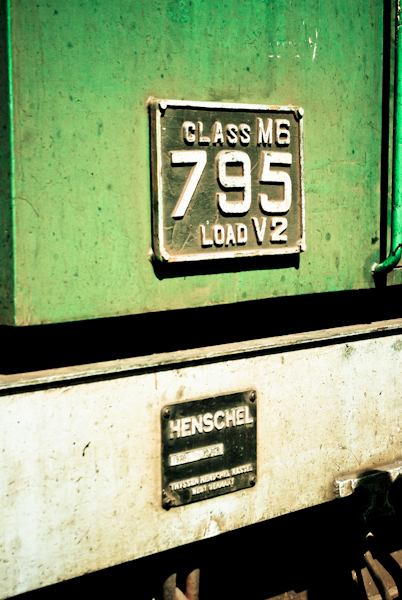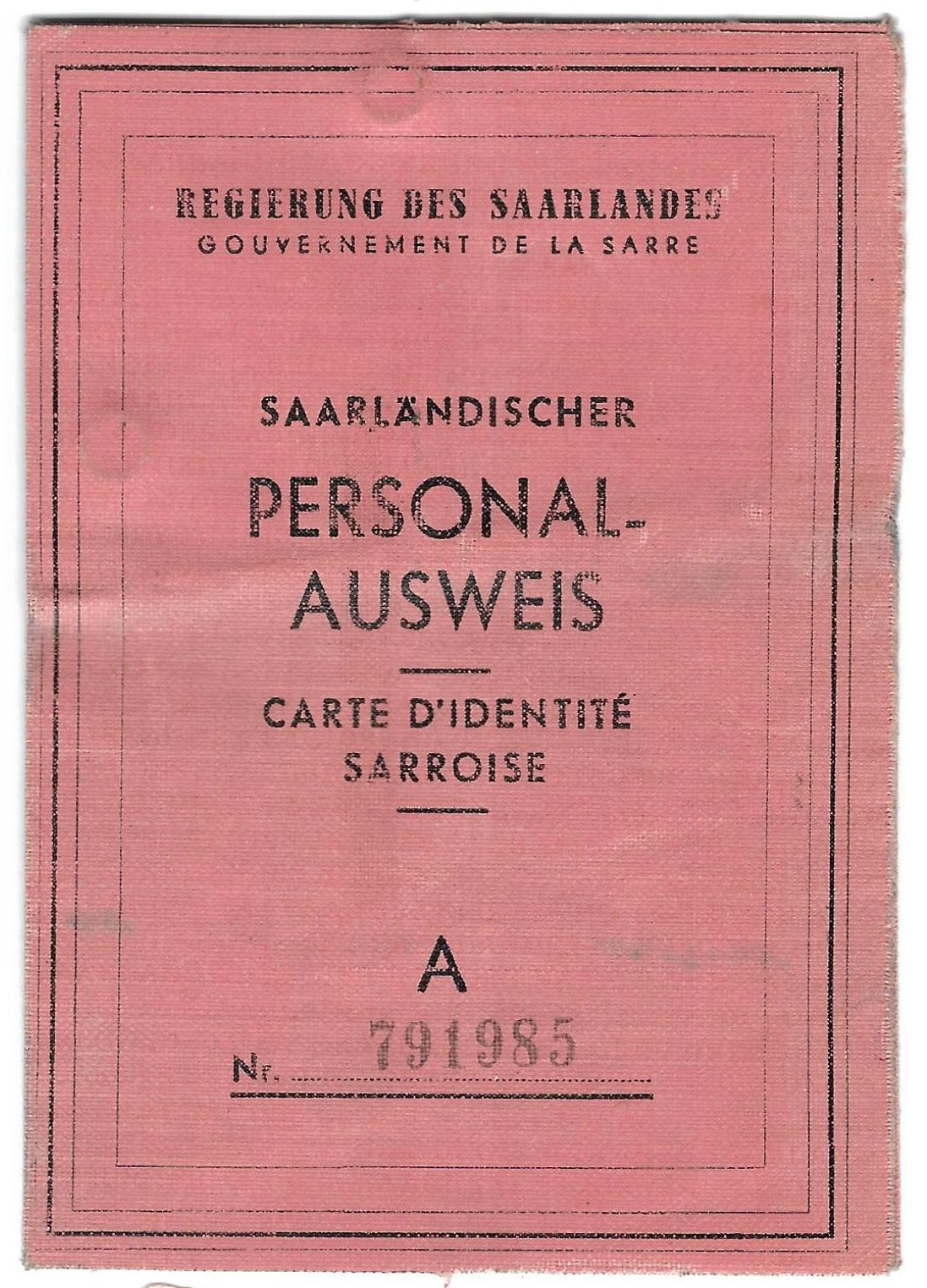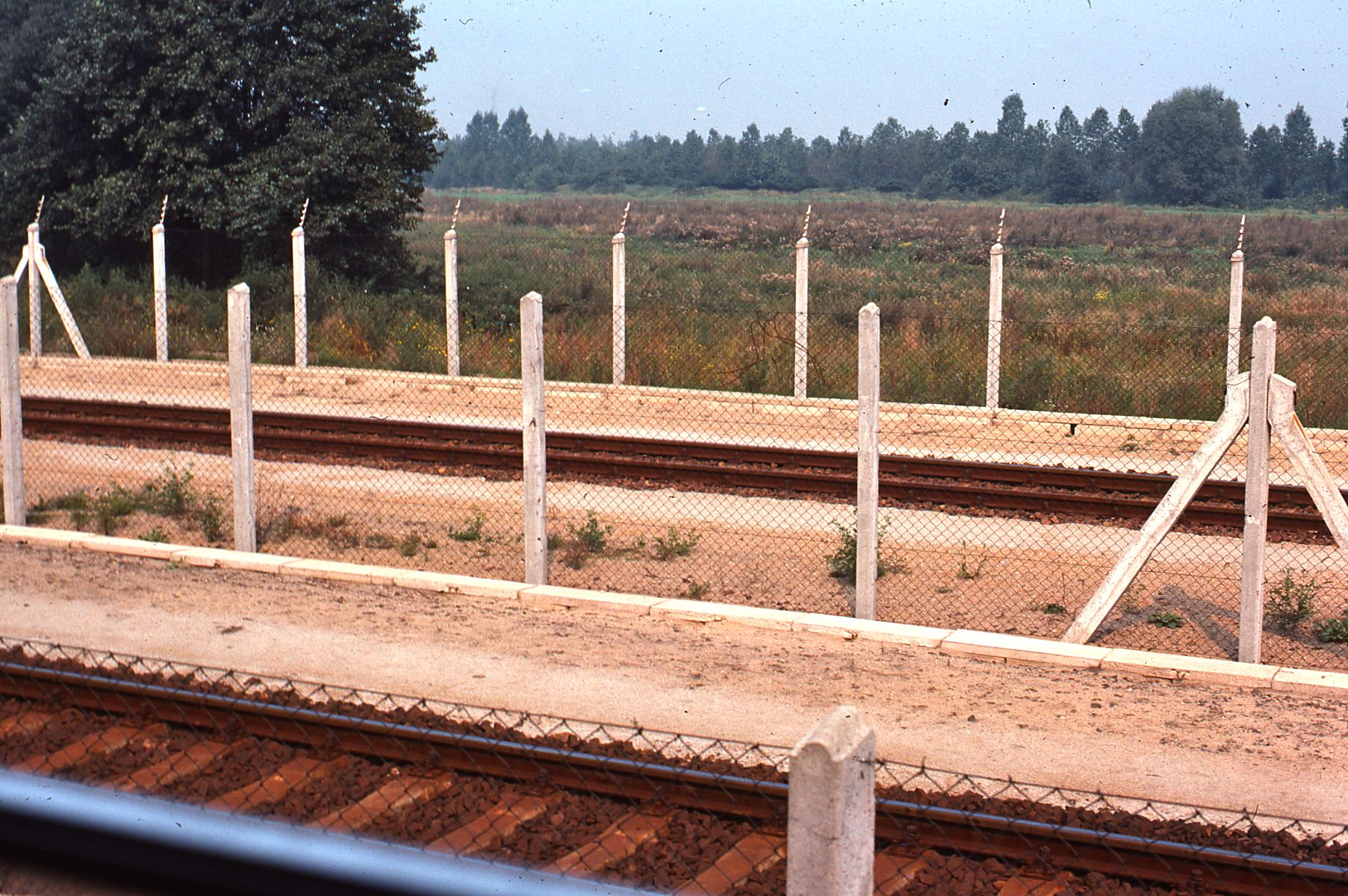|
DRB Class 42
The DRB Class 42Wartime locomotives classes are prefixed DRB (Deutsche Reichsbahn) to distinguish them from those introduced by the DRG (prefixed DRG), which became defunct in 1937, and those introduced later by the East German Deutsche Reichsbahn (prefixed DR). was a type of steam locomotive produced for the Deutsche Reichsbahn. It is one of the three main classes of the so-called war locomotives (''Kriegslokomotiven''), the other two being class 50 and 52. Seventy of the class were captured during World War II by the Soviet Union; under Russian ownership they were given the classification TL (ТЛ). History These engines, built from 1943 onwards, were the second heavy locomotive class of this type after the DRG Class 52. They were built for duties on routes that were cleared for a higher axle load, because they were more economical there than the KDL 1 ''Kriegslokomotiven'' of Class 52. In principle they were slimmed down 44s. The Class 42 was procured as ''Kriegslokomoti ... [...More Info...] [...Related Items...] OR: [Wikipedia] [Google] [Baidu] |
Henschel & Sohn
Henschel & Son () was a German company, located in Kassel, best known during the 20th century as a maker of transportation equipment, including locomotives, trucks, buses and trolleybuses, and armoured fighting vehicles and weapons. Georg Christian Carl Henschel founded the factory in 1810 at Kassel. His son Carl Anton Henschel founded another factory in 1837. In 1848, the company began manufacturing locomotives. The factory became the largest locomotive manufacturer in Germany by the 20th century. Henschel built 10 articulated steam trucks, using Doble steam car, Doble steam designs, for Deutsche Reichsbahn-Gesellschaft, Deutsche Reichsbahn railways as delivery trucks. Several cars were built as well, one of which became Hermann Göring's staff car. In 1935 Henschel was able to upgrade its various steam locomotives to a high-speed Streamliner type with a maximum speeds of up to by the addition of a removable shell over the old steam locomotive. In 1918, Henschel began the pr ... [...More Info...] [...Related Items...] OR: [Wikipedia] [Google] [Baidu] |
Austrian Federal Railways
The Austrian Federal Railways ( , formally or () and formerly the or ''BBÖ'' ), now commonly known as ÖBB (), is the national railway company of Austria, and the administrator of Liechtenstein's railways. The ÖBB group is owned entirely by the Republic of Austria, and is divided into several separate businesses that manage the infrastructure and operate passenger and freight services. The Austrian Federal Railways has had two discrete periods of existence. It was first formed in 1923, using the ''Bundesbahn Österreich'' name, as a successor to the Imperial Royal Austrian State Railways (kkStB), but was incorporated into the ''Deutsche Reichsbahn'' during the 1938–1945 Anschluss. It was reformed in 1947, under the slightly different name ''Österreichische Bundesbahnen'', and remains in existence in this form. Major changes currently being made to the Austrian railway network are the construction of the Koralm Railway, the Semmering Base Tunnel and t ... [...More Info...] [...Related Items...] OR: [Wikipedia] [Google] [Baidu] |
List Of DRG Locomotives And Railbuses
The railway vehicle classes covered by this list of DRG locomotives and railbuses belonged to the ''Deutsche Reichsbahn-Gesellschaft'' or DRG (1924–37) and its successor, the ''Deutsche Reichsbahn'' or DRB (post 1937). The DRG (lit. German Imperial Railway Company) was formed under the terms of the Dawes Plan from the ''Deutsche Reichseisenbahnen'' (lit. Imperial Railways), a merger of the various German state railways after the First World War. The tables are generally organized in accordance with the DRG's numbering schemes for the various types of vehicles. A brief explanation of this may be found in the articles on the numbering scheme of the German railways and German steam locomotive classification. After the end of the Second World War the West German part of the DRB became the ''Deutsche Bundesbahn'' (DB), but its East German counterpart continued to be called the ''Deutsche Reichsbahn'' (DR) – see Deutsche Reichsbahn (East Germany). The DB and the DR later introduce ... [...More Info...] [...Related Items...] OR: [Wikipedia] [Google] [Baidu] |
Oberlahnstein
Oberlahnstein () is a part of the city of Lahnstein in Rhineland-Palatinate in Germany. It lies on the right bank of the Rhine, at the confluence of the Lahn 4 m. above Koblenz, on the Right Rhine railway from Cologne to Frankfurt-on-Main. Oberlahnstein still retains parts of its ancient walls and towers, and possesses a castle, the Schloss Martinsburg, formerly the residence of the electors of Mainz, and the chapel, Marien Kapelle, in which the German king Wenceslaus was deposed by the electors in 1400. Near the town is the castle of Lahneck, built about 1290, destroyed by the French in 1689, and restored in 1854. In the neighborhood are lead Lead () is a chemical element; it has Chemical symbol, symbol Pb (from Latin ) and atomic number 82. It is a Heavy metal (elements), heavy metal that is density, denser than most common materials. Lead is Mohs scale, soft and Ductility, malleabl ... and silver mines. Notes Towns in Rhineland-Palatinate {{RhinelandPalat ... [...More Info...] [...Related Items...] OR: [Wikipedia] [Google] [Baidu] |
Bingerbrück
Bingerbrück () is a ''Ortsteil, Stadtteil'' of Bingen am Rhein, on the opposite side of the river Nahe (Rhine), Nahe from the old town of Bingen. It was self-administering until 1969. Points of interest Binger Mäuseturm "The Mouse Tower of Bingen" - a customs tower built in 1298 on an island in the Rhine, lies in Bingerbrück's limits. Its name is part of a legend in which the villainous archbishop Hatto II, Hatto of Mainz plays a major role. To eradicate poverty, he had a number of poor people burnt in a shed, ironically commenting on their death cries: "Hear, hear how the mice squeak!" As punishment by the heavens he was plagued by mice, and he fled to the tower to secure himself. But the mice crossed the Rhine to the island, penetrated the tower, and devoured the bishop alive. History Roman Empire During the construction of the railway in the 1850s, an extensive Roman graveyard was found. Middle Ages In 1150, Hildegard von Bingen founded the Rupertsberg convent in ... [...More Info...] [...Related Items...] OR: [Wikipedia] [Google] [Baidu] |
Franco-Crosti Boiler
The Franco–Crosti boiler is a type of boiler used for steam locomotives. It was designed in the 1930s by Attilio Franco and Dr Piero Crosti. The main difference between it and conventional feedwater heaters widely used on the continent is that the Franco-Crosti boiler uses both exhaust steam and exhaust gases from the firebox. Conventional feedwater heaters only use exhaust steam. Purpose The Franco–Crosti boiler is a modification of the conventional fire tube boiler design used on most steam locomotives. Unlike conventional boilers the heat remaining in the exhaust gases is used to preheat the water supply for the main boiler using a secondary heat exchange mechanism. This mechanism, known as the ''feedwater heater'' is essentially a secondary boiler. The preheated feedwater is fed at full boiler pressure into the main boiler via clack valves. The feedwater heater is not designed to produce steam, instead raising the temperature of the feedwater. This allows the heater to ... [...More Info...] [...Related Items...] OR: [Wikipedia] [Google] [Baidu] |
Henschel
Henschel & Son () was a German company, located in Kassel, best known during the 20th century as a maker of transportation equipment, including locomotives, trucks, buses and trolleybuses, and armoured fighting vehicles and weapons. Georg Christian Carl Henschel founded the factory in 1810 at Kassel. His son Carl Anton Henschel founded another factory in 1837. In 1848, the company began manufacturing locomotives. The factory became the largest locomotive manufacturer in Germany by the 20th century. Henschel built 10 articulated steam trucks, using Doble steam designs, for Deutsche Reichsbahn railways as delivery trucks. Several cars were built as well, one of which became Hermann Göring's staff car. In 1935 Henschel was able to upgrade its various steam locomotives to a high-speed Streamliner type with a maximum speeds of up to by the addition of a removable shell over the old steam locomotive. In 1918, Henschel began the production of gearboxes at the Kassel plant. In Ja ... [...More Info...] [...Related Items...] OR: [Wikipedia] [Google] [Baidu] |
Tender Locomotives
A tender is a special rail vehicle hauled by a steam locomotive containing its fuel (wood, coal, oil or torrefied biomass) and water. Steam locomotives consume large quantities of water compared to the quantity of fuel, so their tenders are necessary to keep them running over long distances. A locomotive that pulls a tender is called a tender locomotive. Locomotives that do not have tenders and carry all their fuel and water on board are called ''tank locomotives'' or ''tank engines''. A corridor tender is a locomotive tender with a passageway to one side, allowing crew changes on the fly. A brake tender is a tender that is heavy and used (primarily) to provide greater braking efficiency. General functions The largest steam locomotives are semi-permanently coupled by a drawbar to a tender that carries the water and fuel. The fuel source used depends on what is economically available locally. In the UK and parts of Europe, a plentiful supply of coal made this the obvious cho ... [...More Info...] [...Related Items...] OR: [Wikipedia] [Google] [Baidu] |
Saarland
Saarland (, ; ) is a state of Germany in the southwest of the country. With an area of and population of 990,509 in 2018, it is the smallest German state in area apart from the city-states of Berlin, Bremen, and Hamburg, and the smallest in population apart from Bremen. Saarbrücken is the state capital and largest city; other cities include Neunkirchen and Saarlouis. Saarland is mainly surrounded by the department of Moselle (Grand Est) in France to the west and south and the neighboring state of Rhineland-Palatinate in Germany to the north and east; it also shares a small border about long with the canton of Remich in Luxembourg to the northwest. Having long been a relatively small part of the long-contested territories along the Franco-German linguistic border, Saarland first gained specific economic and strategic importance in the nineteenth century due to the wealth of its coal deposits and the heavy industrialization that grew as a result. Saarland was first est ... [...More Info...] [...Related Items...] OR: [Wikipedia] [Google] [Baidu] |
Deutsche Bundesbahn
Deutsche Bundesbahn (, ) or DB () was formed as the state railway of the newly established West Germany (FRG) on 7 September 1949 as a successor of the Deutsche Reichsbahn-Gesellschaft (DRG). The DB remained the state railway of West Germany until after German reunification, when it was merged with the former East German Deutsche Reichsbahn (DR) to form Deutsche Bahn, which came into existence on 1 January 1994. Background After World War II, each of the military governments of the Allied Occupation Zones in Germany were ''de facto'' in charge of the German railways in their respective territories. On 10 October 1946, the railways in the British and American occupation zones formed the ''Deutsche Reichsbahn im Vereinigten Wirtschaftsgebiet'' (German Imperial Railway in the united economic area), while on 25 June 1947, the provinces under French occupation formed the Südwestdeutsche Eisenbahn. With the formation of the FRG these successor organisations of the DRG were ... [...More Info...] [...Related Items...] OR: [Wikipedia] [Google] [Baidu] |
East Germany
East Germany, officially known as the German Democratic Republic (GDR), was a country in Central Europe from Foundation of East Germany, its formation on 7 October 1949 until German reunification, its reunification with West Germany (FRG) on 3 October 1990. Until 1989, it was generally viewed as a communist state and described itself as a Socialist state, socialist "workers' and peasants' state". The Economy of East Germany, economy of the country was Central planning, centrally planned and government-owned corporation, state-owned. Although the GDR had to pay substantial war reparations to the Soviets, its economy became the most successful in the Eastern Bloc. Before its establishment, the country's territory was administered and occupied by Soviet forces following the Berlin Declaration (1945), Berlin Declaration abolishing German sovereignty in World War II. The Potsdam Agreement established the Soviet occupation zone in Germany, Soviet-occupied zone, bounded on the east b ... [...More Info...] [...Related Items...] OR: [Wikipedia] [Google] [Baidu] |
Deutsche Reichsbahn (East Germany)
The Deutsche Reichsbahn (, ) or DR was the operating name of state owned railways in East Germany, and after German reunification until 1 January 1994. In 1949, occupied Germany's railways were returned to German control after four years of Allied control following World War II. Those in the Soviet occupation zone (which became the German Democratic Republic or GDR on 7 October 1949) continued to run as the Deutsche Reichsbahn, the name given to the German national railways in 1937. In West Germany, the Reichsbahn was succeeded by the Deutsche Bundesbahn (DB). Both the Reichsbahn and the Bundesbahn continued as separate entities until 1994, when they merged to form the Deutsche Bahn. Organisation The DR was the largest employer in the GDR and as a state-owned firm was directly subordinated to the GDR Ministry of Transport ''(Ministerium für Verkehr der DDR)''. From November 1954 until November 1989, the GDR Minister of Transport also occupied the position of the Direct ... [...More Info...] [...Related Items...] OR: [Wikipedia] [Google] [Baidu] |






